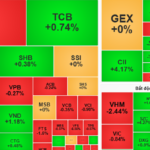Annual leave is a significant benefit that helps employees restore their labor capacity and achieve a work-life balance. So, how many days off are employees entitled to per year, how is it calculated, and is advance notice necessary?
How Many Days Off Are Employees Entitled To Per Year?
According to Clause 1, Article 113 of the 2019 Labor Code, employees who have worked for an employer for 12 months are entitled to annual leave with full pay as per their labor contract. The number of days off depends on the nature of the work:
– 12 working days per year for employees in regular working conditions.
– 14 working days per year for minors, disabled people, and those engaged in arduous, hazardous, or dangerous jobs.
– 16 working days per year for employees engaged in especially arduous, hazardous, or dangerous jobs.

How many days off are employees entitled to per year? (Illustration: Vietnamnet)
Notably, employees who have not completed 12 months of service with an employer are still entitled to annual leave on a pro-rata basis, calculated based on the number of months worked.
The specific calculation is guided by Article 66 of Decree 145/2020/ND-CP (effective from February 1, 2021) as follows: Number of annual leave days = (Standard annual leave days + additional days based on seniority, if any) / 12 x Actual months worked.
For example, an employee in regular working conditions is entitled to 12 days of annual leave. If they have only worked for 6 months, their leave entitlement would be: (12 days / 12 months) x 6 months = 6 days.
Additionally, Clause 4, Article 113 of the Labor Code stipulates that employees and employers may agree to split the annual leave into multiple periods or accumulate it for up to three years.
This flexibility allows employees to either take short breaks or plan a longer vacation (without exceeding the total number of leave days entitled) as per their preferences and agreement with the employer.
Notably, there is no limit to the number of consecutive days that can be taken for each leave period. Employees can take several days off in a row, provided they have sufficient leave days available and agree with the employer.
Do Employees Need to Give Advance Notice for Taking Leave?
The 2019 Labor Code does not mandate a specific number of days for employees to provide advance notice when taking leave. However, Clause 4, Article 113 of the Labor Code states that employers are responsible for setting the annual leave schedule after consulting with employees and must inform them in advance.
This means that employers will proactively create and communicate the annual leave schedule to their employees. If an employee takes leave according to this pre-determined schedule, no additional advance notice is required.
In cases where an employee wishes to take leave outside of the fixed schedule, it is advisable to reach an agreement with the employer beforehand. This ensures that the business can arrange work assignments accordingly, preventing disruptions to regular operations, production, or business activities.
The Labor Code does not specify a time frame for advance notice in the case of flexible leave requests, leaving it to be agreed upon between the two parties. Ideally, employees should notify their employers as early as possible to facilitate smooth arrangements for both sides.
While it is not mandatory to provide advance notice if the leave aligns with the pre-determined schedule, it is advisable for employees to proactively communicate their leave plans with their employers to ensure a harmonious relationship and avoid potential disruptions to work.
Understanding these regulations on annual leave empowers employees to effectively utilize their benefits while maintaining a balanced labor relationship.
“Consultant’s Salary for Tender Packages Can Go Up to VND 105 Million/Month”
The Ministry of Home Affairs has unveiled new regulations that could see a significant boost in remuneration for domestic consultants. Effective from July 1, 2025, the monthly salary of these professionals can reach a maximum of VND 105 million, forming the basis for determining bid package rates.













































